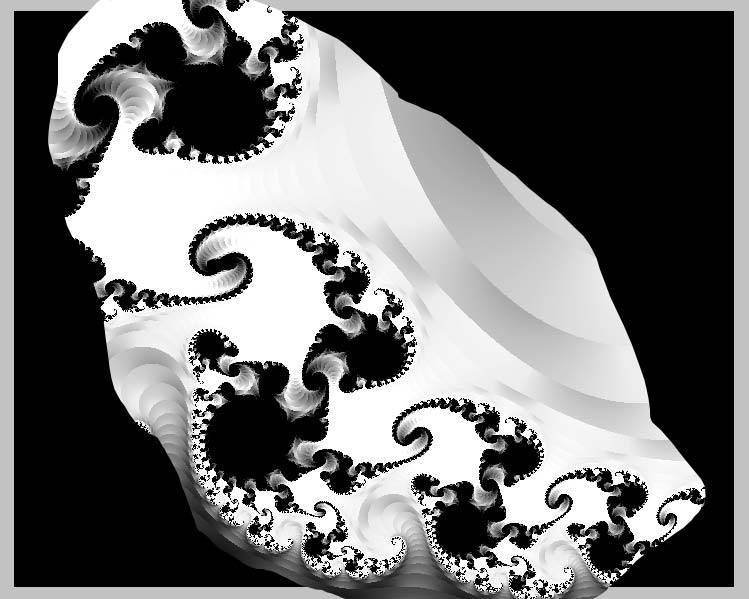

FRACTAL—fluid tableau [click photo for next . . . ]
. . . . . . .


FRACTAL—fluid tableau [click photo for next . . . ]
. . . . . . .
FRACTALS AS PATTERNS OF RHYTHMIC MOVEMENT
Fractals are the discovery of the convivial and brilliant French
mathematician, Benoit Mandelbrot. Mandelbrot noticed already when he
was a young student that he had a unique ability to solve equations by
visualizing them in his mind’s eye. Later, this gift became essential
in his quest for a new geometry, one not based on the simple squares
and triangles of Euclidian textbooks, but a geometry that would more
accurately describe the complex forms of nature like the serpentine
flowforms of rivers and coastlines, the ragged edges of ridgelines, or
the pattens we see pass by everyday in the heavens above. Indeed, he
is constantly reminding us that “clouds are not spheres.”
Whereas the details of the formal mathematics upon which fractals
are based are for me I’m afraid something like a horizon I’m strongly
drawn to but which retreats as I try to come near, I greatly enjoy looking
at them as a kind of meditation on form. I experience fractals like
I do all natural form, not as static shapes, but rather as complex
composites of rhythmic movements. In other words, I experience them as
a kind of abstract music.
The three key generative principles of fractals are amazingly simple.
In my own words, they are:
(1) self-similar patterns;
(2) manifested at differences of scale;
(3) by means of an, in theory, infinite number of
rhythmic repetitions or iterative movements.
Music indeed! Any composer, or photographer, or poet would do well
I think to study seriously Mandelbrot’s work. And, of course, because of
the in principle unlimited number of steps involved in their generation,
we can make good use of the largely untapped processing power of the
now ubiquitous home computer to make them visible to us.
That is, or we can just step outside and study the great and wonderful
symphony of the shapes of flowers, of ice crystals, or of the clouds
overhead!
(All of the left-facing pages of the 21 chapter headings of THE LITTLE CLAVIER
[ PDF 110 MB] feature black and white fractal patterns especially generated for this
collection of poems and texts.)
Below is a what I call a fractal mirror poem. Music and poetry have become
so utterly fragmented from each other in classical Western culture, that
I suppose many will have difficulty understanding my passion
for new form. Let me just mention, as an aside—and as a challenge—
that this is a difficult style to master. Don't take my word
for it. Try it! And remember, like a leaf whose structure first comes
to life when we hold it up to the sun, the poem must be heard like music,
read aloud:
Follow @cliffcrego
|
A die falls. |
Isn't it strange? Randomness repeated does not look like accident. Rather, it gives one a sense of an intelligence near by. Is that what they had in mind in laying the two sides of a split marble slab, one next to the other, the intricate weave of the dragon veins, left the reverse of right? These patterns in two's bring us somehow closer to home. The die comes to rest on a '3' but we need a '2' since one of any thing makes no difference, makes no place for our butterfly, waiting so patiently till now, to spread its wings. |
